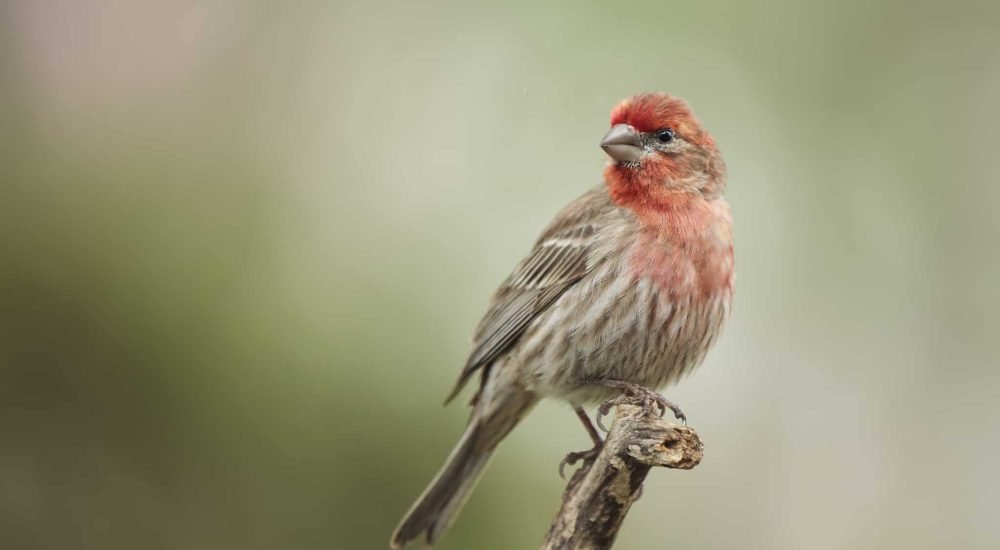
In the state of Colorado you may encounter twelve different species of finches.
These finches are:
- Grey-Crowned Finch
- Black Rosy Finch
- Brown-Capped Rosy Finch
- House Finch
- Purple Finch
- Cassin’s Finch
- Common Redpoll
- Red Crossbill
- White-Winged Crossbill
- Pine Siskin
- Lesser Goldfinch
- American Goldfinch
Want to learn more? This book on everything to do with Finches is a fantastic read!
The House Finch is one of the most common birds to be found in the state of Colorado.
Colorado has a divided climate, there are three areas of the state which have different climates. These different climates are usually separated by the mountain ranges of the state. In Colorado there are 41 different state parks and there are four national parks.
Of these national parks, Rocky Mountain National Park is a very popular spot for bird watching and spotting finches. Let’s take a look at these 12 different finches in more detail and see what you can do to attract them to your home and garden.
Want to attract finches? Take a look at our article!
What Finches can be seen in Colorado?
Table of Contents
1. House Finch
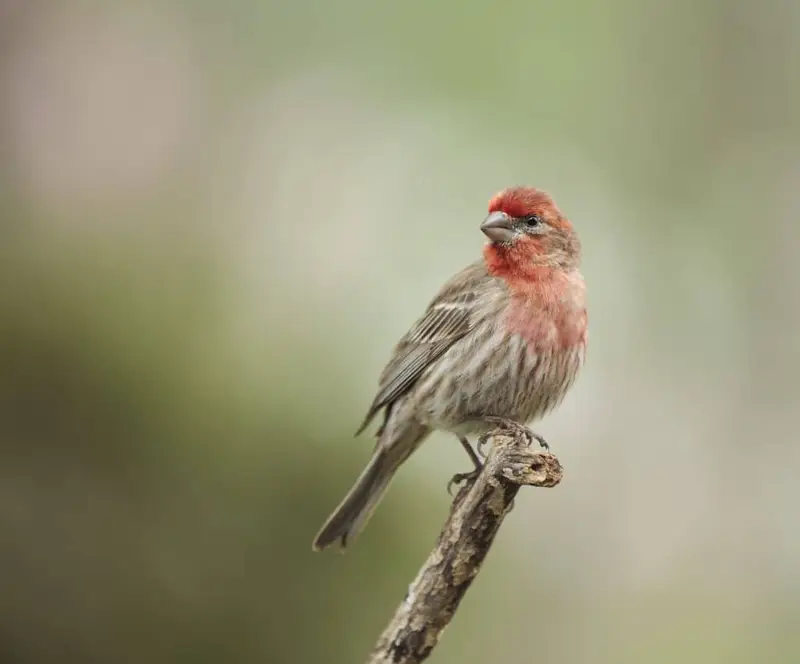
Fun Facts:
- A finch’s diet is dependent on the type of beak they have. House Finches have a seed feeding beak as seeds are their main source of food. The most popular seed for them is the black oil sunflower seed. They also eat certain types of flower buds and fruits, these incluce cherries and thistle.
- House Finches are only very small birds with a small weight range. They range from 16-27g and have only a tiny wingspan of 20-25cm.
Males of this species have bright red plumage whilst the females are covered in browns.
These birds are very social and, even during the breeding season, they will stay in large flocks of up to 100 individuals.
They are avid users of man-made bird feeders and prefer to sit on perches whilst feeding. They will also scavenge for dropped pieces of food on the ground.
These finches can be across the whole of the state of Colorado and they are found here year-round.
If you want to attract these finches to your garden, place a variety of perching bird feeders in your garden. They are most likely to visit in winter and are big fans of sunflower seeds.
2. Purple Finch
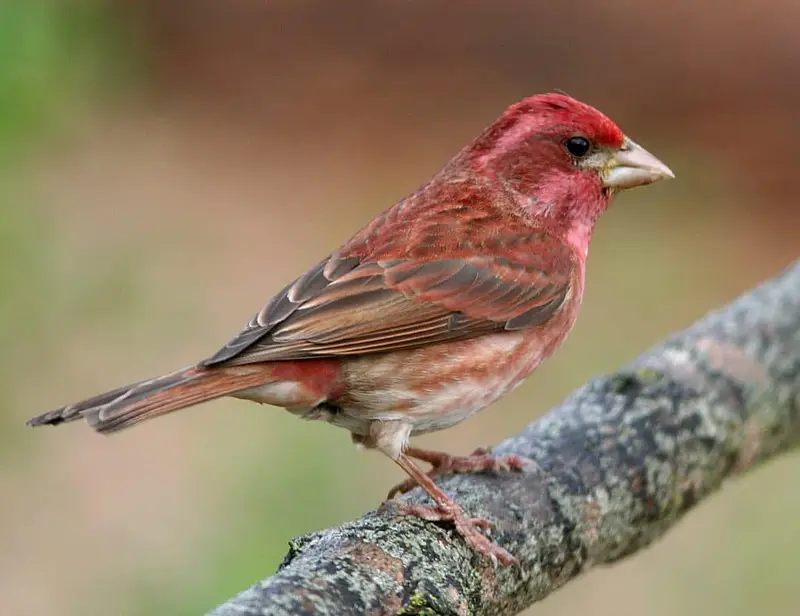
Fun Facts:
- These birds have bills that are designed for breaking different seeds open. Their favourite seeds include black oil sunflower seeds and safflower seeds. They also enjoy eating nectar and occasionally consume flower buds.
- Purple Finches weigh just slightly more than House Finches at 18-32g. They also have very small wingspans which range from 22-26cm.
These finches, despite the name, are not actually purple in colour. These birds are known for their shows of aggression which usually occurs around food.
It is rare that these shows, which include looking down their beaks at other birds, lead to any actual attacks but they will peck one another if needed.
Females usually reign the victors over these confrontations. During the breeding season the females are the ones who build the nests using small twigs and other bits.
These birds are quite rare in Colorado and are usually only found outside of the breeding season. They can only be seen in the very north east of the state.
If you want to attract these birds to your garden you will need a variety of seed feeders, black sunflower seeds are a favourite. They prefer feeders with perches rather than platforms.
3. American Goldfinch
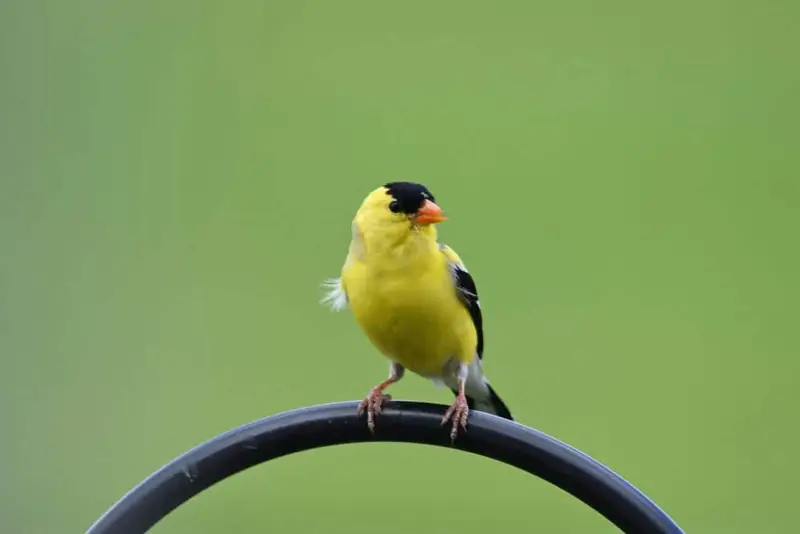
Fun Facts:
- American Goldfinches have a beak designed for eating small seeds. Nyjer seeds being a favourite of theirs. They rarely eat anything outside of the seed family.
- These finches are slightly smaller than the other finches that we’ve looked at, weighing only 11-20g. They also have a very tiny wingspan which measure 19-22cm.
These birds have different colours depending on the season. During the breeding season males will have bright yellow bellies and deep black wings.
Females also have yellow bellies, but they are much duller. During the winter season these feathers will turn browner.
Breeding pairs of this species spend their time searching for an appropriate nesting spot together.
Males will defend the nesting area whilst the female focuses on building the nest. They have a unique call which has been described as the noise po-ta-to-chip.
The American Goldfinch is present across the whole of the state and can be seen all year. They are in the north east of the state throughout all of the seasons whilst the only tend to be in the other areas of Colorado in winter.
If you want to bring one of these birds to your garden, you need to have seed feeders with different types of seeds. Some favourites of this finch are black sunflower seeds and nyjer seeds.
4. Pine Siskin
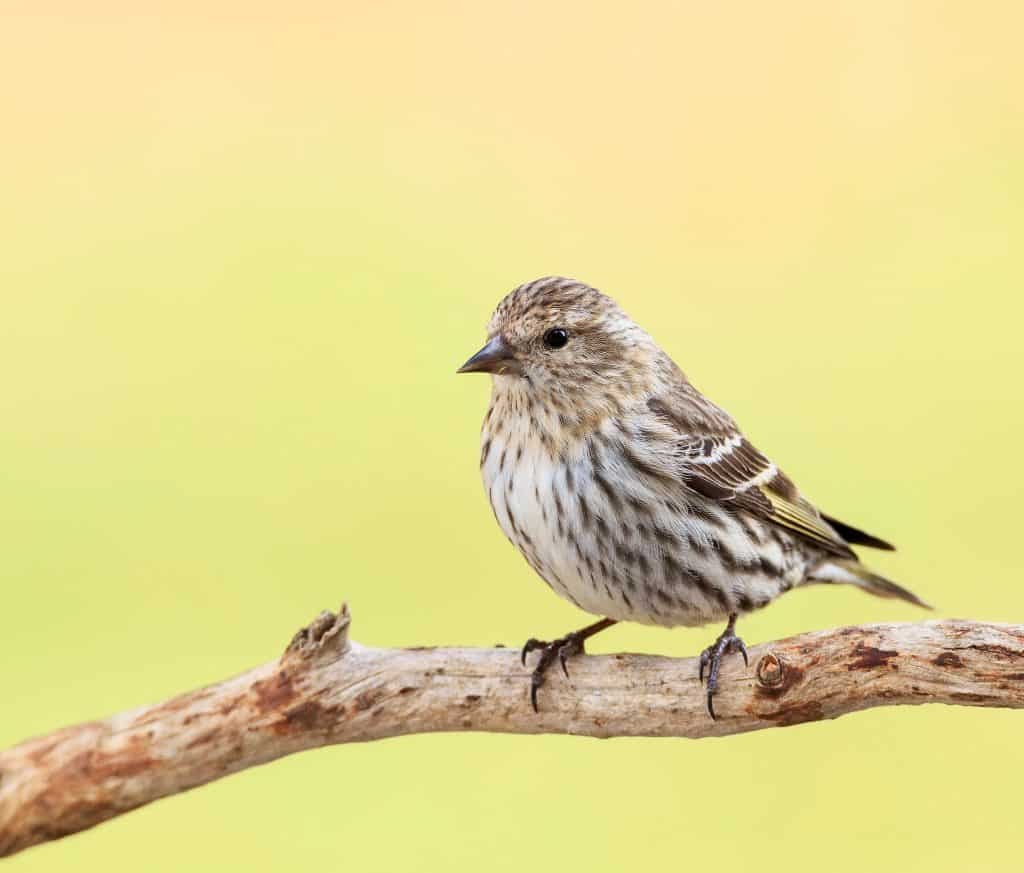
Fun Facts:
- These birds have beaks designed for eating seeds and, as the name suggests, they mostly eat seeds from the pine family. As well as seeds, they have also been known to forage for small insects, these insects are usually aphids.
- Pine Siskins are very similar in size to the American Goldfinch, weighing in at a range of 12-18g. Like other finches, they also have small wingspans of 18-22cm.
Pine Siskins have very small bills and have noticeable streaking feathers covering their bodies. Males each have unique mating songs and will try to court a female by sitting on high perches and performing this song.
These finches are social birds and will stay in loosely structed colonies, even throughout the mating season.
Whilst these birds do not fight very often, they can begin to aggressive with one another over food sources. This is usually during the winter months when food sources are scarce.
Pine Siskins are found in the western half of Colorado all year. They can be seen across the rest of the state, however they are not as common and are only seen during the non-breeding season and the winter months.
You are more likely to see one in your garden during the winter months when they will increase their search range for food sources.
Make sure to have seed feeders in your garden that can hold the very small seeds that Pine Siskins eat. Pine seeds are a favourite of this species.
5. Grey-Crowned Finch
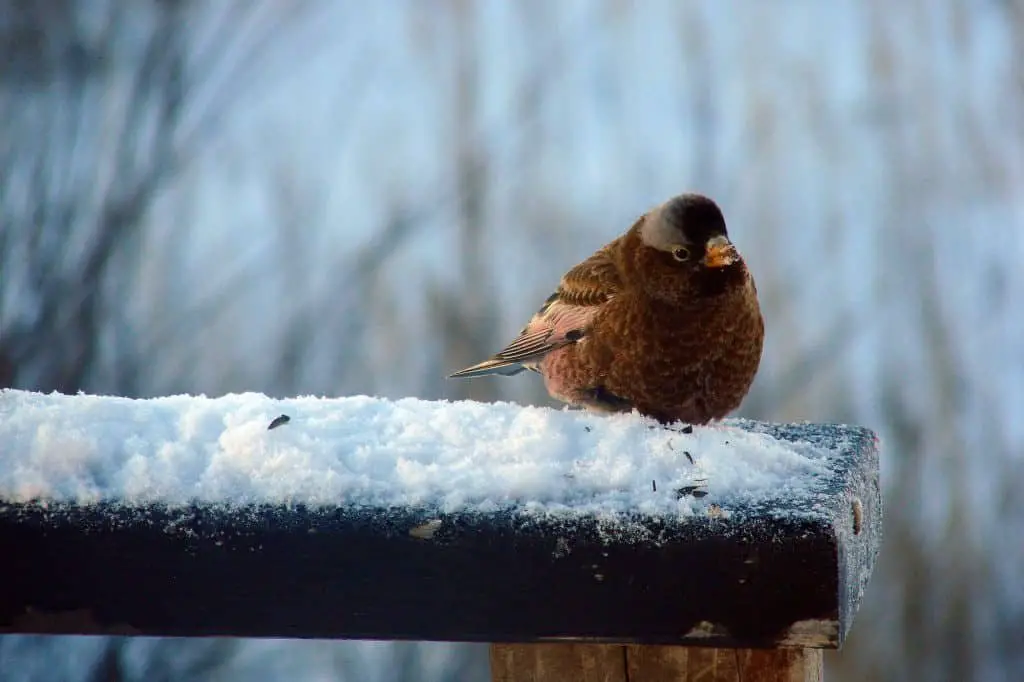
Fun Facts:
- These birds will primarily eat seeds but have also been known to eat insects throughout the summer.
- These finches are slightly larger than others, they can weigh from 20-60g.
The Grey-Crowned Finch, also known as the Grey-Crowned Rosy-Finch, is a small finch with a rosy feathered breast and a grey feathered head.
As with lots of finch species, the females will pick the nesting site and proceed to build the nest herself, using material such as moss and twigs.
These birds are monogamous during the breeding season and stay together after mating has occurred. The male will protect their territory and the female as she incubates their eggs.
These finches are usually found to the western half of Colorado and they are in the state in the non-breeding seasons.
If you want to attract them to your garden, you should use feeders that have platforms rather than perches as they do not like to perch whilst eating. You should also fill these feeders with seeds, sunflower seed are a favourite of these finches.
6. Black Rosy Finch
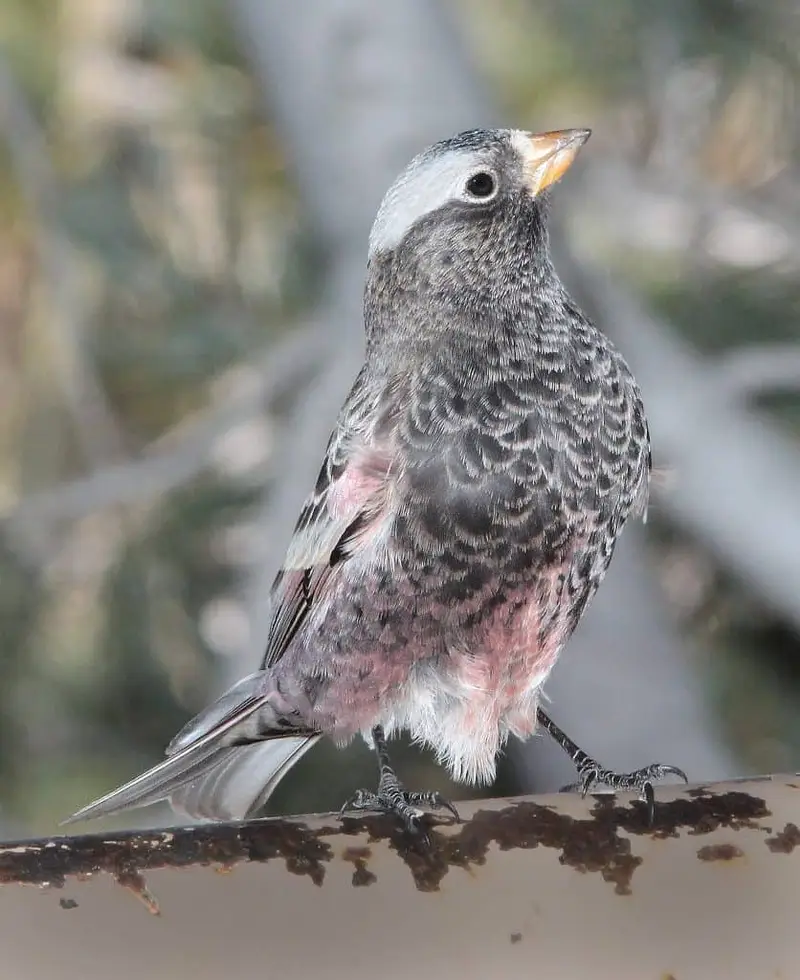
Fun Facts:
- These birds will eat seeds year-round but will sometimes eat insects during the summer when they are more readily available.
- These finches are medium sized and have a weight range of 20-32g.
The Black Rosy Finch has pale red feathers on their underbellies and black feathers on their wings, back and breasts. Whilst these finches do make nests, the male does not protect this nest and instead protects the female.
He will follow her wherever she goes and is sure to protect her from any other approaching males.
Outside of the breeding season they are very social and in the winter they will flock together, sometimes these flocks will reach numbers of 1000 individuals.
Similar to the Grey-Crowned Finch, the Black Rosy Finch is only found in Colorado during the non-breeding seasons. They are usually found in the western and central areas of the state.
You are most likely to see these birds in your garden during the winter months. They enjoy seed feeders filled with nyjer and sunflower seeds. Use platform feeders rather than perch feeders.
7. Brown-Capped Rosy Finch
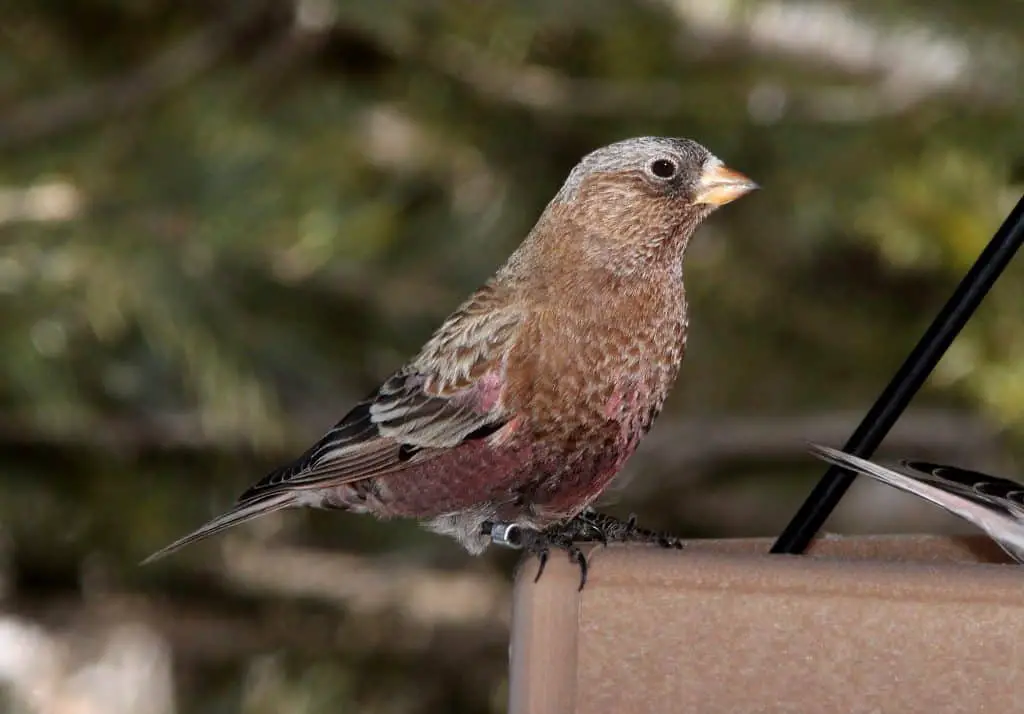
Fun Facts:
- They mostly eat seeds but have been known to eat insects and spiders.
- They are medium sized and weigh 23-32g.
The Brown-Capped Rosy Finch has a rose coloured underbelly, brown feathered heads and plumages.
These finches have been less studied than other species of finch, very little is known about their mating behaviours and social tendencies both in and out of the breeding seasons.
It is known that they do like to make their nests on cliffsides and under rocks where available. The female will usually build this nest with materials such as grass and stems.
Their distribution has not been fully mapped across America yet. However, they seem to mostly reside in the central areas of the Colorado State.
They are usually more abundant outside of the breeding season as well. These birds will happily use man-made bird feeders, get ones that are suitable for seeds and use a variety of different seeds to try and attract them.
8. Cassin’s Finch
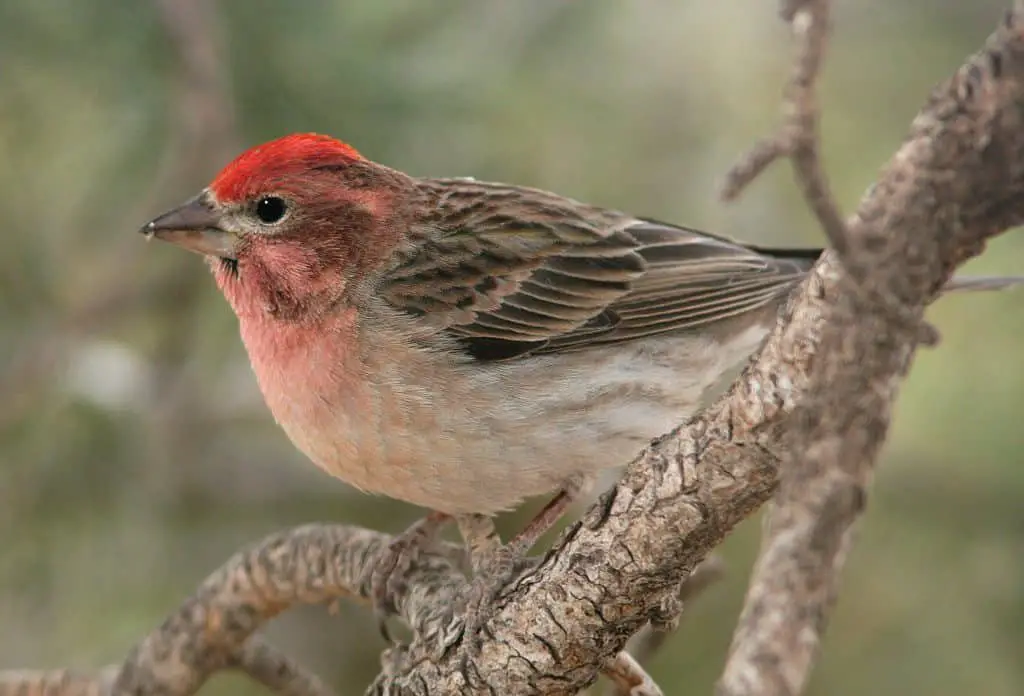
Fun Facts:
- These birds primarily feed on seeds, however they do eat insects when they are available.
- These finches are slightly larger than the others, weighing in at 24-34g.
These finches have pale red heads plumages, though females show no red feathers. The females pick the nesting site and do most of the nest building themselves.
Whilst she is building a nest, the male will fly around the site and defend her and their territory from any other approaching males.
These finches will join different species of foraging finches during the winter to help each other search for food. Not much is known about the structure of these colonies.
These birds can be found in Colorado throughout the year and are most common in the western and central areas of the state.
These finches will visit gardens more frequently in the winter when food is scarce. Your best bet to attract one is to use seed feeders filled with sunflower seeds.
9. Common Redpoll
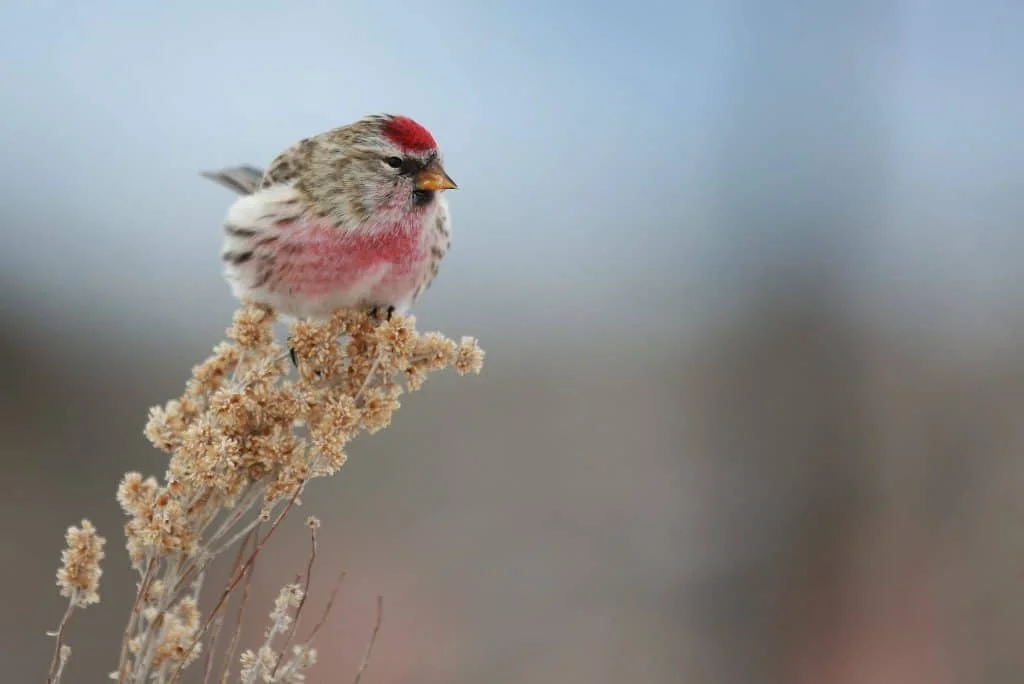
Fun Facts:
- These birds only have very small bills meaning they can only eat tiny seeds.
- They are average sized for a finch, weighing 11-20g.
The Common Redpoll has a small patch of red feathers on its head and a frosty red plumage. As with lots of other finches, females will pick the nesting site and do most of the work when it comes to actually building the nest.
They will steal from other nests to make theirs. Males begin courting females by flying in slow circles around females whilst making a mating call.
Whilst the Common Redpoll can be found in Colorado across the whole state, they are not very common.
It is only winter months which they will be in the state, widening their search for food and increasing their visits to backyards.
If you want to bring one of these finches to your garden make sure to have appropriate bird feeders which can hold very tiny seeds. Nyjer seeds are a particular favourite of the Common Redpoll.
10. Red Crossbill
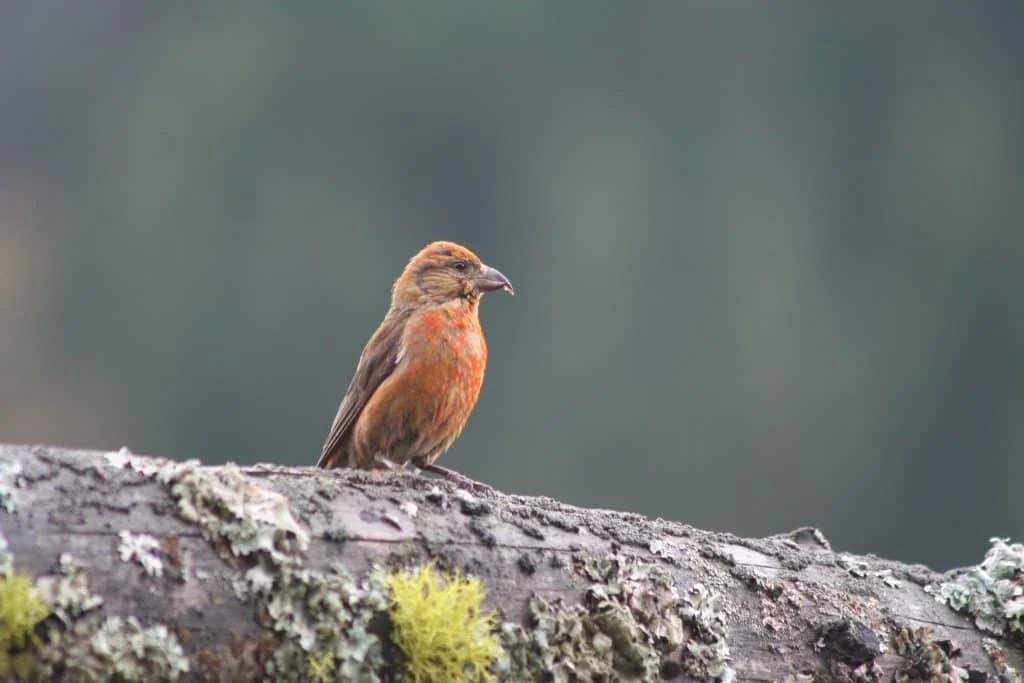
Fun Facts:
- The Red Crossbills mostly feed on seeds, particularly pine seeds. During the summer they will also sometimes eat insects.
- Due to their varied and unstudied sizes, there is no average weight range for this bird.
This finch, as the name suggests, has a large bill which crosses over itself. These birds are covered in deep red feathers. Even during the mating season, Red Crossbills are very social birds and will stay in large flocks.
Breeding pairs will roost together and make their nests close to other breeding pairs in the flocks.
When mating these birds are monogamous and will sometimes raise more than one brood per pair. However, it is not known if they return to the same mate within the flock each year.
These birds are found across the state. They can be seen year-round in the eastern and central areas of the state. In the west of the state they can only be seen outside of the breeding season, usually in the winter months.
You are more likely to see one of these birds in the winter months so make sure you have your feeders prepared. They like to eat seeds, particularly pine seeds where available.
11. White-Winged Crossbill
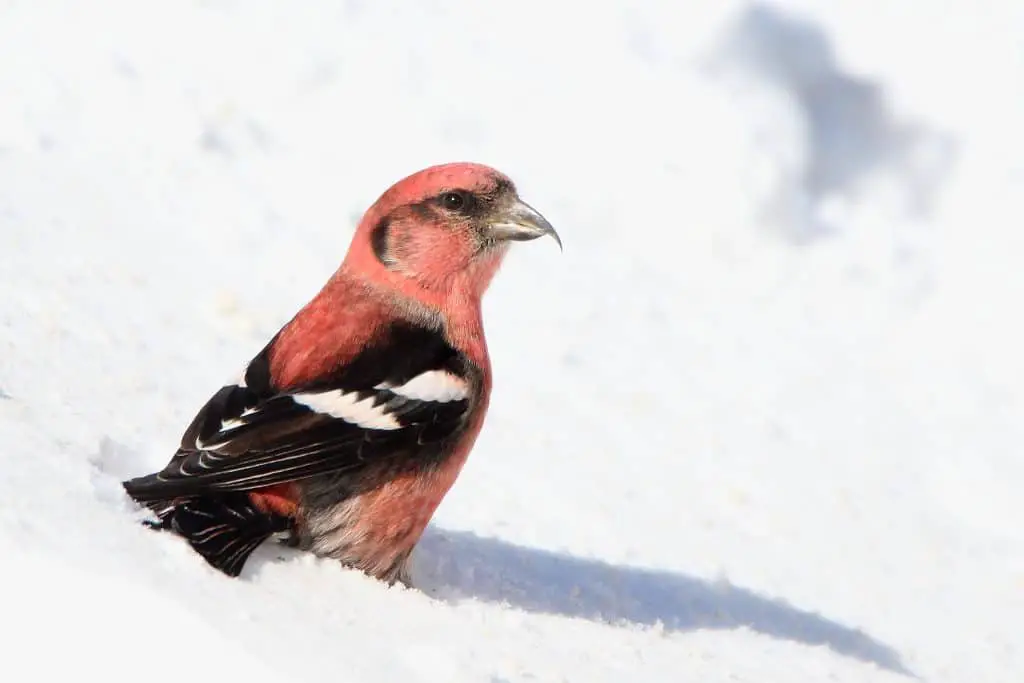
Fun Facts:
- These birds mostly eat seeds throughout the year but have been known to eat insects in the summer as well.
- These birds are on the larger side of average for finches and weigh 22-28g.
These finches, like the Red Crossbill, have a distinct beak that crosses over. They have red heads and plumages with black wings.
They have striking white tips on their wings. To court a female, males will perch in high places and sing a mating song, sometimes this song will be performed in groups.
When a female approaches a male, they will nip at each other’s beaks before the male starts feeding the female and the courtship is solidified.
Males will protect the female whilst she is nesting and, unlike lots of other finch species, the males will take care of the young whilst females seek another partner.
White-winged Crossbills have been seen across the whole state of Colorado. They can only be seen year-round in the very north western regions of the state.
As for the rest of the state they are only seen outside of the breeding seasons, mainly in early winter.
You will be very lucky to see one of these birds in your garden but placing seed feeders in there will increase your chances. They particularly like to eat tamarack and fir seeds.
12. Lesser Goldfinch
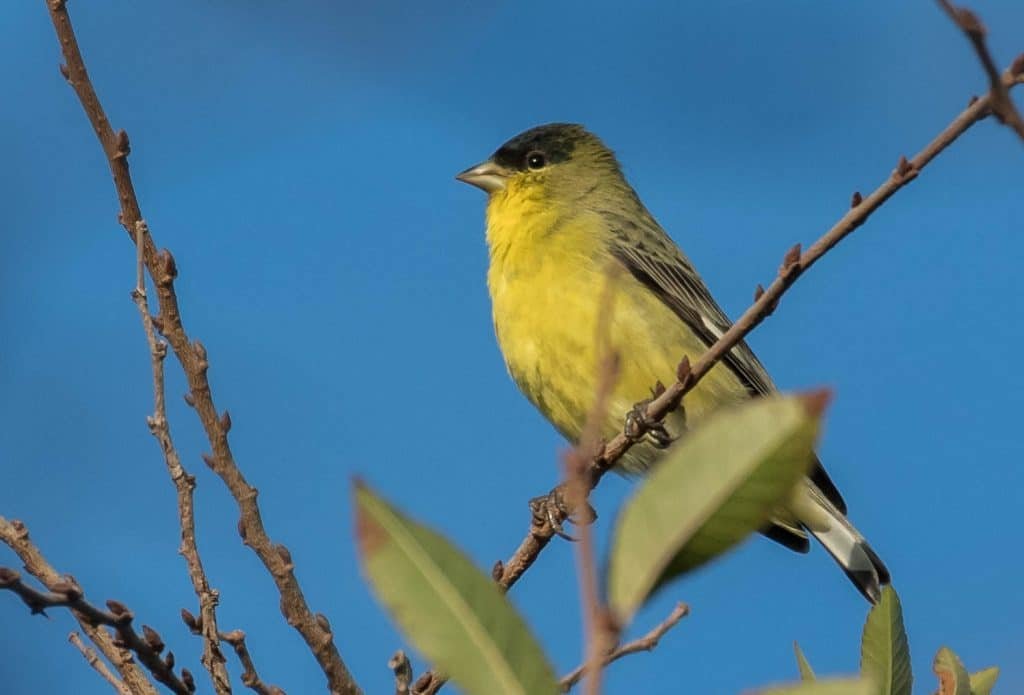
Fun Facts:
- These finches mostly eat seeds however they will also consume fruit from time to time, such as elderberries. In summer they will also eat certain types of flowers.
- These finches are the smallest of the species that we have previously looked at, they weigh only 8-11.5g with a wingspan of 15-20cm.
These finches have very bright colours and the males will have bright yellow bellies and heads with black and brown wings.
Females will also be yellow, but it is a duller shade. In the breeding season, males will pick and establish a territory before they try to court a female.
They will then invite a female in by performing their unique mating song to them. Once a female has entered the territory the breeding pair will chase each other in flight.
These birds are not permanent residents in Colorado but they usually spend more time in the state during the breeding season.
You are most likely to spot one of these birds in the southern or central areas when they are making their nests.
If you want to try and attract one to your garden, use a seed feeder that allows the bird to hover as this is their preferred feeding method. The best kinds of seeds to use are black oil sunflower seeds and Nyjer seeds.

More Articles.
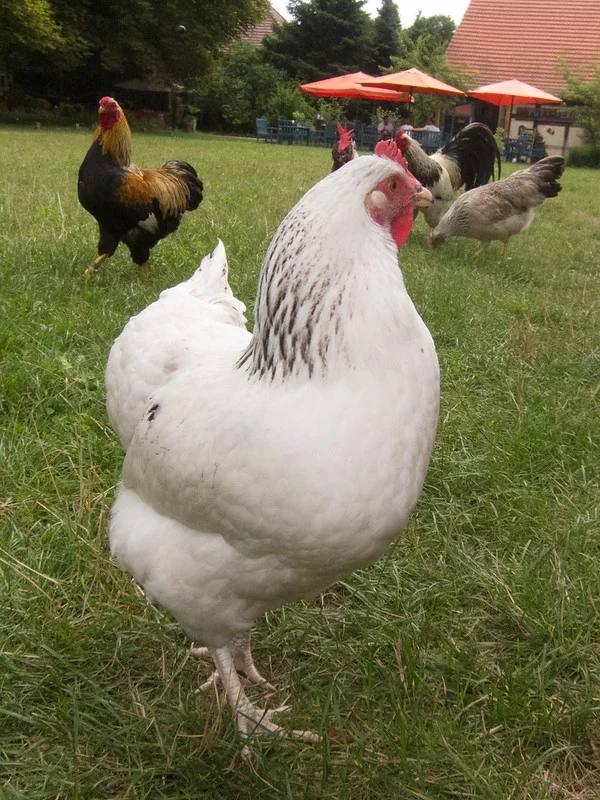
What does it mean to see a White Hen in your dream? (Symbolism & Meaning)
Seeing a Phenoix in your dream can symbolize a fresh start, a new beginning, or

Cardinals are one of the most beautiful birds around and are known to delight birdwatchers
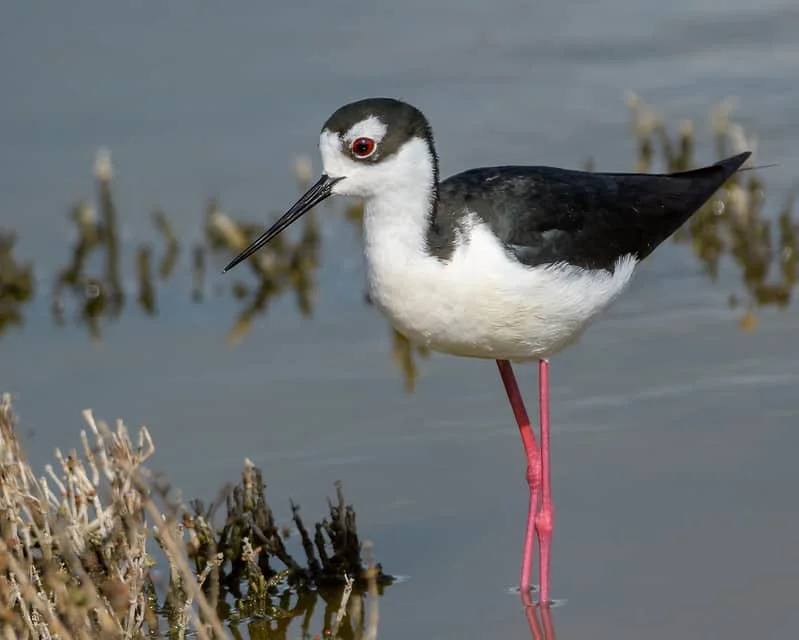
North American Birds with Red Feet (14 Species with Sound and Pictures)
North America is filled with many wonderful birds with red feet – in fact, there

About Us
We are avid bird-watchers who recently retired, allowing us more time to travel the world. Fortunately, we have managed to visit numerous countries around Europe, Asia, and America. Watching and photographing birds has been a passion for many years and we are making the most of the extra time on our hands!
